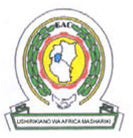
In order to promote public education and public safety, equal justice for all, a better informed citizenry, the rule of law, world trade and world peace, this legal document is hereby made available on a noncommercial basis, as it is the right of all humans to know and speak the laws that govern them.

EAS 225-3:2001
ICS 59.080
EAST AFRICAN COMMUNITY
© EAC 2001
First Edition 2001
iDevelopment of the East African Standards has been necessitated by the need for harmonizing requirements governing quality of products and services in East Africa. It is envisaged that through harmonized standardization, trade barriers which are encountered when goods and services are exchanged within the Community will be removed.
In order to achieve this objective, the Partner States in the Community through their National Bureaux of Standards, have established an East African Standards Committee.
The Committee is composed of representatives of the National Standards Bodies in Partner States, together with the representatives from the private sectors and consumer organizations. Draft East African Standards are circulated to stakeholders through the National Standards Bodies in the Partner States. The comments received are discussed and incorporated before finalization of standards, in accordance with the procedures of the Community.
East African Standards are subject to review, to keep pace with technological advances. Users of the East African Standards are therefore expected to ensure that they always have the latest versions of the standards they are implementing.
© East African Community 2001 — All rights reserved*
East African Community
P O Box 1096
Arusha
Tanzania
Tel: 255 27 2504253/8
Fax: 255-27-2504481/2504255
E-Mail:eac@eachq.org
Web: www.each.org
* © 2001 EAC — All rights of exploitation in any form and by any means reserved worldwide for EAC Partner States’ NSBs.
iiUmbrella fabrics — Specification ⎯ Part 3: Silk fabrics
This part of this East African Standard specifies the requirements for woven umbrella fabrics composed of 100% silk fibres.
The titles of the East African Standards referred to in this standard are listed below.
EAS 225-1, Umbrella fabrics — Specification — Part 1: 100% cotton fabrics
EAS 242, Method for determination of dimensional change of fabrics by cold water immersion
CD-K-04-2002, Method for determination of breaking force and elongation of woven fabrics
CD-K-95-01, Method for determination of mass per unit length or area of woven and knitted fabrics
EAS 255, Method for quantitative chemical analysis of binary fibre mixtures
EAS 239, Method for determination of colour fastness of textile materials to rubbing
EAS 249, Method for determination of colour fastness of textile materials to light
EAS 252, Method for determination of water repellency of fabrics by cone test
EAS 254, Method for determination of tear resistance of woven fabrics by falling pendulum
EAS 251, Method for determination of resistance of fabrics to penetration by water (hydrostatic head test
EAS 258, Methods for determination of dimensions of woven fabrics
CD-K-05-2002, Specification for upholstery fabrics and knitted fabrics
EAS 245, Methods of test for coated fabrics — Part 1: Determination of roll characteristics
For the purpose of this East African Standard, definitions given in EAS 225-1 apply.
The fabric shall be woven from 100% silk yarns. This shall be determined in accordance with EAS 255.
The fabric properties shall be as specified in Table 1. These properties shall be determined in accordance with the method of test indicated against each property in the table.
1| Characteristics | Requirement | Test Method | |
|---|---|---|---|
| Mass per sq.m, g, minimum | 110 | CD-K-95-01 | |
| Tear resistance, wither direction, N minimum | 60 | EAS 254 | |
| Breaking force (5 cm × 20 cm strips), either direction, N minimum | Warp 500 | CD-K-04-2002 | |
| Weft 400 | |||
| Resistance to yarn slippage N, minimum | 100 for seam opening of 3 mm | CD-K-05-12002 | |
| Dimensional changes after cold-water immersion, max. | -3 % | EAS 242 | |
| Water penetration resistance, minimum | 40 cm H2O | EAS 251 | |
| Water repellency | No wetting of outer surface | EAS 252 | |
| Colour fastness to weathering | 5 | EAS 249-2 | |
| Colour fastness to rubbing | Wet | 4 | EAS 239-1 |
| Dry | 4 | EAS 239-1 | |
The width of each piece shall be as declared subject to a tolerance of +2 % or −(minus) 1 %. This shall be determined in accordance with EAS 258-1.
The length of each piece shall be as declared subject to a tolerance of −(minus) 1%. This shall be determined in accordance with EAS 258-2.
The width of each roll shall be as declared subject to a tolerance of −(minus) 1 or +2 %. This shall be determined in accordance with Clause 4 of EAS 245-1.
The length of each roll shall be as declared subject to a tolerance of −(minus) 1 %. This shall be determined in accordance with Clause 3 of EAS 245-1.
The fabric shall be rolled-up into rolls or lapped into bales of the agreed length. The rolls or bales shall be securely wrapped with suitable wrappers to prevent damage.
The following information shall be clearly marked on each roll or bale: